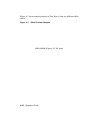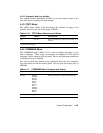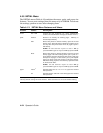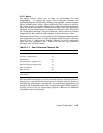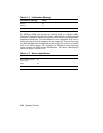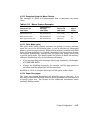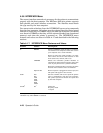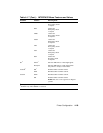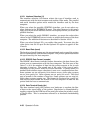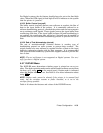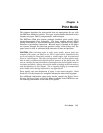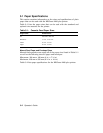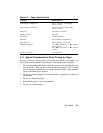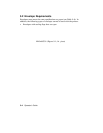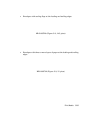4.5.6.1 Interface Selection (i/f)
The interface selection (i/f) feature selects the type of interface used to
communicate with the host computer and enables video mode. The parallel
and serial interface options must match the interface used by the host
computer.
When you select the parallel (CENTRO) interface, you do not select any
other settings in the INTERFACE menu. The other features in this menu
apply only to the serial interface and are not displayed when you select the
parallel interface.
When you select the serial (RS232C) interface, you must also select other
values in the INTERFACE menu in order to match the features of the host
computer. The additional features are described in Section 4.5.6.2.
When you select Optional I/O, you enable video mode. You must plug the
video option into the I/O port for the Optional I/O option to appear on the
i/f menu.
4.5.6.2 Baud Rate (baud)
The baud rate (baud) feature sets the transmit and receive speed the printer
uses to communicate with the host computer. The printer speed must match
the speed used by the host computer.
4.5.6.3 RS232C Data Format (rsmode)
The RS232C data format (rsmode) feature determines the data format the
printer uses to communicate with the host computer. The first part of the
value (7 or 8) is the number of data bits the printer expects to see in each
character it receives. The second part of the value is the type of parity
(checking) bit the printer looks for in each character. A parity check is a
method used to detect errors when data is sent over a communications line.
Some systems use an odd parity bit to detect errors, while other systems
use an even parity bit. Some systems use no parity bit at all. The third
part of rsmode is the number of stop bits. Some systems use one stop bit,
while other systems require two. The format for the data bits, parity bit,
and stop bits must match the format of the host computer in order for the
printer and the host to communicate.
4.5.6.4 Data Terminal Ready (dtr)
The data terminal ready (dtr) feature uses hardware to regulate the flow
of data to the input buffer of the printer. Regulation is accomplished by
toggling a signal on the DTR line of the serial port when the printer is ready
to receive data. This is sometimes referred to as hardware handshaking
protocol.
4–30 Operator’s Guide



